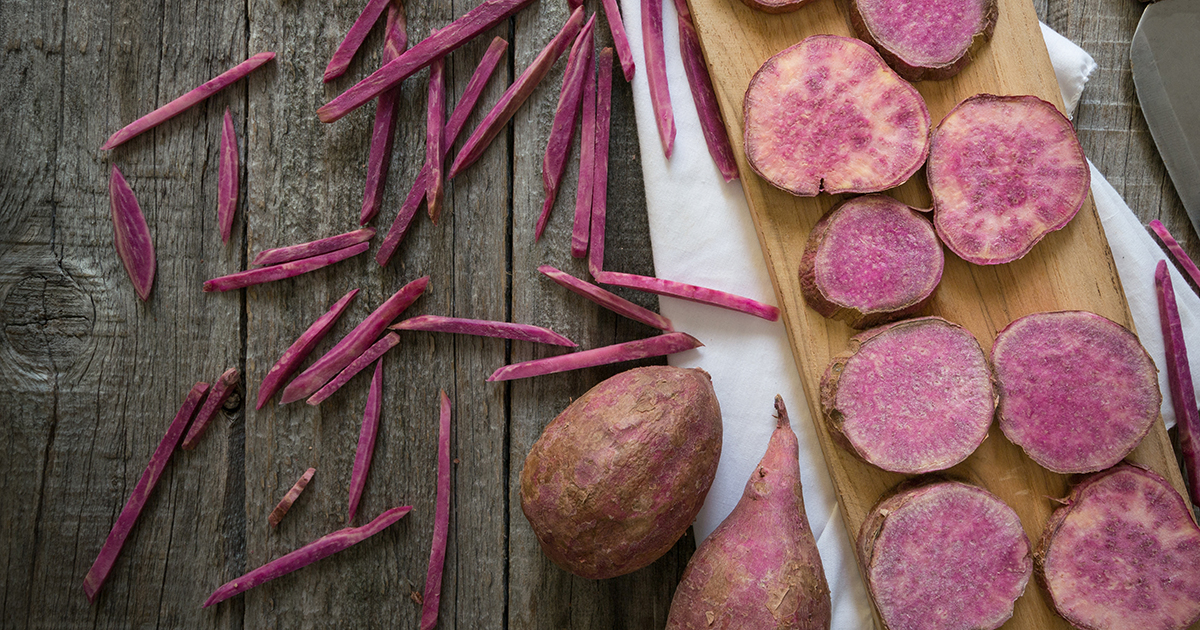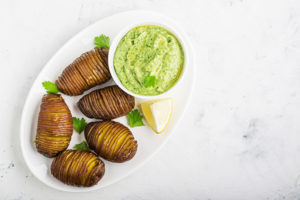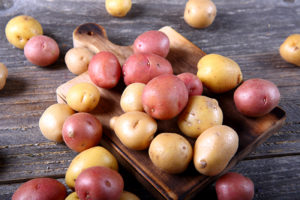
Are potatoes healthy?
See what our dietitians recommend
Take a stroll through the produce section at any grocery store. There are a number of options when it comes to potatoes, but what’s the difference?
Most people go for the traditional russet potato, known for being the go-to for baking, but more than 200 varieties of potato are sold in the United States. The most common types are russet, red, white, yellow, blue/purple, fingerling and petite.
Most grocery stores carry several varieties, and not just in the produce section. Potatoes can be found throughout the grocery store with the boxed potatoes (instant or dehydrated) or the frozen aisles as hash browns, fries or sliced, diced and wedged.
Nutritional and economic value
Potatoes are rich in some vitamins, including:
 Vitamin C – Excellent source. Helps teeth and gums to be healthy, helps heal cuts and wounds
Vitamin C – Excellent source. Helps teeth and gums to be healthy, helps heal cuts and wounds- Potassium – Good source. Helps maintain healthy blood pressure. Potatoes provide one of the most affordable sources of potassium.
- Vitamin B6 – Good source. Plays important role in carbohydrate and protein metabolism.
Potatoes are also one of the best nutritional values in the produce department, providing significantly better nutritional value per dollar than most other raw vegetables.
Choosing the right potato
Of the seven types of potato, each has its own its own strengths. Depending on your preferences or the dish you’re making, you might find you prefer a certain type.
Here’s what these common potatoes are best known for:
 Russet: baking and frying
Russet: baking and frying- Yellow: Grilling, baking, roasting or mashing
- Red: good for potato salad, soups and stews because it stays firm through cooking process
- White: good for frying, grilling or potato salads
- Purple/Blue: microwaving, steaming, roasting and baking; pairs well with salads
- Fingerlings: pan-frying, roasting
- Petite: roasting; good for potato salads
Potato toppings

Adults should have about 14 cups of vegetables each week, including about six cups of starchy vegetables, such as a potatoes, green peas and corn.
While topping a potato with gobs of butter, sour cream and bacon may be tempting, it can quickly take your dish from healthy to indulgent. Consider these tips when topping your spud:
Opt for portion control for healthy weight maintenance. Limit toppings high in fat or calories.
- Butter: up to 1 tablespoon
- Sour cream: up to 2 tablespoons
- Healthy alternative: plain Greek yogurt
- Bacon: one cooked slice
- Alternative: turkey bacon
- Shredded cheese: 1 ounce
Other topping ideas
- Salsa
- Guacamole
- Marinara
- Chopped turkey or chicken
- Avocado
- Mushrooms
- Tomatoes
- Broccoli
- Black beans
Visit osfhealthcare.org/recipes to find more ways to enjoy potatoes.